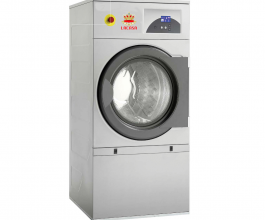Using substances to help in the cleaning of clothing has existed from Ancient times when the Italians used a combination of sulphur and water with charcoal to wash clothes. The Egyptians used ashes and silicates to soften water. Soaps were the first detergents to be used in washing clothes and the detergent use of particular synthetic surfactants was found in Germany in the First World War when there was a lack of soap. These continued until after the Second World War when tetra propylene was designed in aviation fuel and then utilised in detergents.

Enzymes was explored by Rohm from the early 1900’s but the usage was Restricted before the end of the century when thermally strong bacterial enzymes became available. Soap has almost been substituted in developed nations as a cleaning agent as it is most ineffective when compared with the quantity used. Hard water can decrease its efficacy almost to zero and from the 1950’s soap had become almost completely replaced by alkyl benzene sultanates, sadly these were found to be quite poor in their capacity to be biodegradable and those have been replaced by linear alkyl benzene sultanates LAB. These LAB’s have taken over as the key industrial detergents although refinements, which are impervious to hard water, are currently available.
The present detergent Consists of a water softener of that sodium Triphosphate is the most frequent. Bleaches are occasionally added which target the vegetable things like chlorophyll and tannins and many others, they comprise of oxidisers like sodium perorate and cung cap hoa chat giat la. Enzymes are usually included and can make around 2% of the item and these are there to ruin stubborn stains composed of proteins, carbohydrates and fats. Each sort of stain takes a different receptor to handle another cause so the mix can be rather complicated. Compounds found in laundry cleaning and treatment could be harsh on garments. The abrasives used inside these products can scrape and wash off surface layers clothes including threads and colours.
Over time this causes fading and contributes to needing replacement of the garments. Imagine having the ability to eliminate all of the abrasive action of laundry detergents and prolonging the life span of your clothing by 50% to 100% more can this save money? Environmentally the major issue has been with sodium Triphosphate as this is sometimes 50 percent of the total and this has caused irreparable damage to rivers and lakes, the issue has been so acute that phosphate replacement is now a significant concern. The EU in 2004 created a judgment that all detergents must be biodegradable and plans to ban phosphates in detergents from 2013.